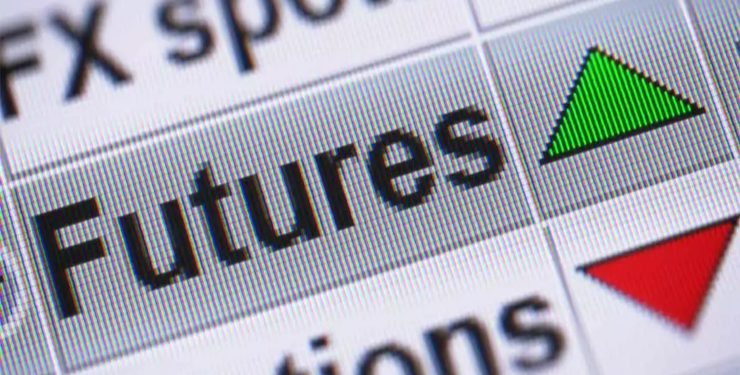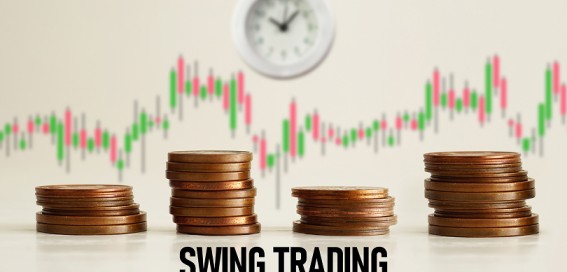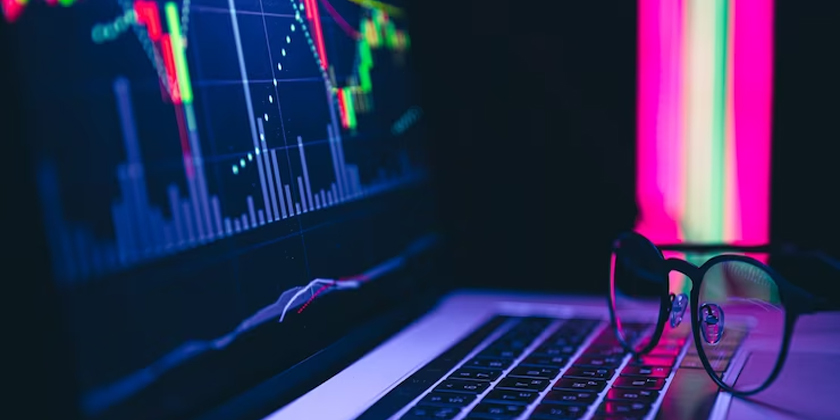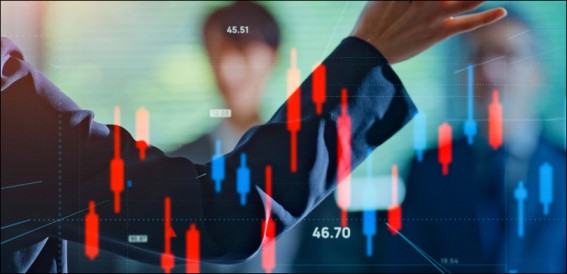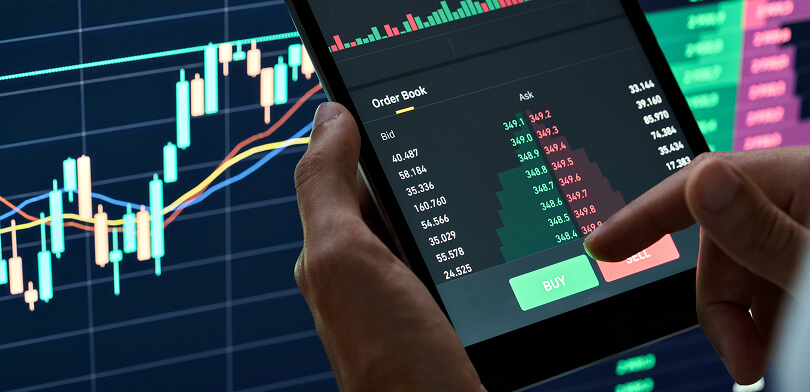- Last Updated: Jun 11,2024 |
- Religare Broking
Futures and Options, or F&O, are financial instruments that allow investors to speculate on the future price movements of various assets, such as stocks, commodities, or currencies. In this guide, we will look into Futures and Options, providing you with the knowledge you need to navigate this dynamic realm of financial trading.
- What is Futures & Options Meaning & Types & Benefits
- Types of Futures and Options
- F&O Trading in the Stock Market
- Futures and Options in Commodities
- Who Should Invest in Futures and Options?
- Futures and Options Trading Strategies
- Difference between Futures and Options
- Risks and Rewards of Trading Futures and Options
- Trading Platforms for Futures and Options
- Regulatory Bodies and Their Roles
- Know the Tax on Futures and Options
- Conclusion
Topics Covered
What is Futures and Options Trading?
Futures and options trading is a type of financial trading where traders buy and sell contracts based on the future price movements of underlying assets. These contracts, known as futures and options, allow individuals to speculate on the price direction of commodities, stocks, currencies, and other financial instruments.
In futures trading, traders enter into a contract to buy or sell an asset at a predetermined price and date in the future. The main purpose of futures contracts is to hedge against potential price fluctuations and manage risk. Traders can profit from futures trading by accurately predicting the price movement of the underlying asset.
Options trading, on the other hand, provides the buyer with the right, but not the obligation, to buy or sell an asset at a specific price within a set time frame.
This flexibility allows traders to speculate on price movements without owning the asset. Options trading can generate income, hedge against market volatility, or take advantage of price fluctuations.
Futures and options trading strategy involves understanding market trends, analyzing data, and making informed trading decisions. Traders need to thoroughly understand the underlying assets, market conditions, and risk management strategies to succeed in this type of trading.
F&O trading involves understanding market trends, analyzing data, and making informed trading decisions. Traders need to thoroughly understand the underlying assets, market conditions, and risk management strategies to succeed in this type of trading.
Types of Futures and Options
Futures and options are versatile financial instruments that come in various forms, each catering to different investment strategies and risk management needs. Futures contracts allow parties to agree on the future price of an asset, while options provide the right, but not the obligation, to buy or sell an asset at a predetermined price. Understanding the different types of futures and options is essential for investors to utilise these tools in their portfolios effectively.
Types of Futures
Commodity Futures- Commodity Futures contracts are based on physical commodities like gold, oil, and agricultural products.
- Used by producers and consumers to hedge against price fluctuations.
- Include contracts on financial instruments like currencies, interest rates, and bonds.
- Commonly used by financial institutions to manage interest rate risk and currency exposure.
- Based on stock market indices such as the NIFTY and SENSEX.
- Utilised by investors to speculate on market movements or hedge existing equity positions.
- Contracts are based on individual stocks.
- Allows traders to speculate on the future price of a specific stock.
Types of Options
Call Options- Provide the buyer the right, but not the obligation, to purchase an asset at a specified price within a certain timeframe.
- Used by investors to speculate on the price increase of the underlying asset.
- Provide the buyer the right, but not the obligation, to sell an asset at a specified price within a certain timeframe.
- Used to speculate on a price decrease or to hedge against potential losses in the underlying asset.
- Options on individual stocks allow traders to bet on the price movement of specific equities.
- Commonly used by employees as part of compensation packages.
- Based on stock indices, enabling broad market speculation or hedging.
- Provide exposure to overall market trends without trading individual stocks.
F&O Trading in the Stock Market
Futures and options (F&O) trading plays a significant role in the Indian stock market, offering traders various opportunities for speculation and risk management.
It allows individuals to engage in leveraged trading, capitalizing on price movements of underlying securities without the need for full ownership. Popular stocks and indices are extensively used for F&O trading, including Reliance Industries, Tata Motors, Nifty 50, and Bank Nifty.
One of the key advantages of F&O trading is the ability to hedge against potential risks and fluctuations in the market. For instance, if an investor holds a large position in Reliance Industries shares but anticipates a decline in their value, they can enter into a futures contract to sell Reliance shares at a predetermined price. This strategy helps protect against potential losses and allows for effective risk management.
Moreover, F&O trading enables traders to profit from upward and downward price movements. For instance, if a trader believes that Tata Motors shares will rise in value, they can buy a call option, which grants them the right to purchase the shares at a specified price within a predetermined time frame.
If the price increases, the trader can exercise the option, benefiting from the price difference. On the other hand, if the price declines, the trader can let the option expire, limiting their losses to the premium paid for the option.
Futures and Options in Commodities
In addition to the stock market, futures and options (F&O) trading also plays a vital role in India’s commodities market. Commodities such as gold, silver, crude oil, natural gas, and agricultural products are commonly traded using F&O contracts. These contracts allow market participants to speculate on the future price movements of commodities and manage risks associated with their positions.
Similarly, traders can also take advantage of upward price movements in commodities. Suppose an investor forecasts an increase in the price of gold. They can purchase a call option, which gives them the right to buy gold at a specified price within a specific period. If the price of gold rises, the investor can exercise the option and profit from the price difference.
Who Should Invest in Futures and Options?
Futures and options are suitable for experienced investors, traders, and financial institutions seeking to hedge against market risks or speculate on price movements. Hedgers, such as farmers or manufacturers, use these instruments to lock in prices and manage the risk of price fluctuations.
Speculators, including day traders and institutional investors, aim to profit from market volatility. Additionally, sophisticated investors with a high-risk tolerance and a deep understanding of market dynamics may find futures and options beneficial for leveraging positions and diversifying their investment strategies.
Hedgers
Hedgers play a crucial role in the futures and options (F&O) market as they utilize these financial instruments to mitigate risks in their investment portfolios effectively. Hedging refers to taking offsetting positions in F&O contracts to protect against potential losses from adverse price movements in the underlying asset.
Recommended Read: What is Hedging?
Hedgers utilize F&O contracts to safeguard their investments against unfavorable market conditions. By employing hedging strategies, they can minimize the impact of price fluctuations and preserve the value of their portfolios. This risk management technique allows hedgers to focus on their core investment objectives without being overly exposed to unpredictable market movements.
Note that while hedging in F&O can mitigate risks, it may also limit potential gains. Hedging involves trade-offs and careful consideration, and hedgers must strike a balance between protecting against downside risks and compromising potential upside opportunities. By actively managing their positions and regularly reviewing market conditions, hedgers can optimize their risk management strategies and enhance the stability of their investment portfolios.
Speculators
Speculators play a significant role in the futures and options (F&O) market, seeking to profit from price fluctuations rather than using these financial instruments for hedging purposes. Speculators are individuals or entities who enter into F&O contracts to make speculative bets on the direction in which the prices of the underlying assets will move.
These market participants aim to capitalize on price volatility and make profits by buying or selling F&O contracts without any intention of physically delivering the underlying asset. They rely on their analysis of market trends, technical indicators, and other relevant information to make informed trading decisions. Speculators in the F&O market can use various strategies, such as buying futures contracts with the expectation of a price increase (going long) or selling futures contracts anticipating a price decrease (going short).Arbitrageurs
Arbitrageurs are sophisticated market participants who exploit price differences in the futures and options (F&O) market. The concept of arbitrage involves taking advantage of discrepancies in prices of identical or similar financial instruments across different markets or exchanges. Arbitrageurs strategically execute trades to capitalize on these price differentials and earn risk-free profits.In the context of F&O, arbitrageurs closely monitor the prices of futures contracts and options contracts linked to the same underlying asset. They identify situations where the prices of these contracts deviate from their fair values due to various factors, such as supply and demand imbalances, market inefficiencies, or temporary disruptions.
Additionally Read: Demat Account Definition
Arbitrage opportunities arise when the prices of similar contracts differ, providing an opening for arbitrageurs to profit. They simultaneously buy the contract at the lower price and sell it at the higher price, aiming to equalize the prices and capture the price differential as profit. This process is often carried out through rapid and automated trading systems to take advantage of short-lived arbitrage opportunities.
Arbitrageurs are essential in ensuring efficient price discovery and market liquidity in the F&O market. Their actions help align prices across different markets, minimizing the possibility of price discrepancies and promoting market efficiency. However, successful arbitrage requires advanced technology, sophisticated trading strategies, and an in-depth understanding of the market dynamics.
Futures and Options Trading Strategies
There are several strategies used that traders employ to take advantage of market opportunities and manage risks:
Long and Short Positions: Traders take Long/ short positions in both futures and options markets to speculate or hedge against price movements.
Spreads and Combinations: Traders can use spreads and combinations to take advantage of price differences between related assets or to hedge against risks.
Examples of spreads include calendar spreads, where different expiration months are used, and inter-commodity spreads, where related commodities are traded.
Combinations involve simultaneous buying and selling of multiple options with different strike prices or expiration dates to create more complex trading strategies.
Recommended Reads - Best Option Trading Strategies
Difference between Futures and Options
Futures and options are types of derivative trading used in financial markets to hedge risk or speculate on the price movements of underlying assets such as stocks, commodities, or currencies. Both allow investors to lock in prices and make trades based on the anticipated future value of these assets, but they operate differently and have distinct features. Understanding these differences is crucial for investors to make informed decisions.
| Feature | Futures | Options |
|---|---|---|
| Obligation | Both parties are obligated to execute the contract at maturity. | The buyer has the right, but not the obligation, to execute the contract. |
| Contract Execution | Must be executed on the specified date. | Can choose to execute the contract before or at maturity. |
| Risk | Higher risk due to mandatory execution and potential for unlimited losses. | Lower risk as the buyer can let the option expire worthless, limiting losses to the premium paid. |
| Premium | No initial premium is required. | The buyer pays an initial premium for the option. |
| Profit Potential | Unlimited profit potential based on the price movement of the underlying asset. | Unlimited profit potential for option buyers; limited potential profit for sellers (premium received). |
Risks and Rewards of Trading Futures and Options
The risks and rewards of trading futures and options can vary depending on individual circumstances, market conditions, and trading strategies.
Risks: The risks include potential losses due to adverse price movements, the need for thorough market analysis and timing, and the costs associated with trading, such as commissions, fees, and margin requirements. Additionally, options contracts have an expiration date, which adds an additional layer of complexity and risk.
Rewards: Futures and options provide opportunities for high leverage, allowing traders to control larger positions with a smaller investment. They also offer flexibility in trading strategies, including speculation, hedging, and spread trading, which can be used to potentially profit in various market conditions.
Trading Platforms for Futures and Options
Trading platforms can be broadly classified into direct access trading platforms and broker-assisted trading platforms. Most trading apps are direct access platforms as they provide traders with direct access to the exchanges and offer advanced trading features such as real-time data, charting tools, and order management. Broker-assisted trading platforms are typically offered by full-service brokers. These platforms are suitable for those who require personalized advice and support from a professional.
When choosing a trading platform, consider factors such as range of products, trading tools, fees, and customer support. It is essential to choose a platform that meets your trading requirements and offers reliable and secure trading services. Additionally, choose a platform that is regulated by SEBI to ensure that your trading activities are conducted within a safe and legal framework.
Regulatory Bodies and Their Roles
In India, futures and options trading is regulated by the Securities and Exchange Board of India (SEBI) under the Securities Contracts (Regulation) Act, 1956.
SEBI has put in place various regulations and compliance requirements to ensure that the trade is conducted in a fair and transparent manner. Some of the key requirements include:
Know Your Customer (KYC)
Brokers are required to conduct KYC checks on their clients before opening a trading account. Additionally, they often facilitate the opening of an online demat account, which is essential for holding securities electronically and seamlessly managing investments.
Margin Requirements
SEBI has prescribed minimum margin requirements that vary according to the trade. The traders must maintain it for futures and options trading.
Position Limits
SEBI has prescribed position limits for traders to ensure that no single trader or group of traders can manipulate the market.
Price Limits
SEBI has also set upper and lower price limits for futures and options contracts to prevent extreme price movements and protect investors.Reporting Requirements
Brokers and traders are required to report all their trades and positions to SEBI to ensure that there is transparency in the market.
Both Brokers and traders are required to comply with all SEBI regulations and guidelines related to futures and options trading.
Non-compliance can lead to penalties and other disciplinary actions.Recommended Read: Types of Trading
Know the Tax on Futures and Options
In India, trading in futures and options is treated as a speculative business for tax purposes, and the gains or losses from such trading are taxed as business income or loss. The tax implications are as follows:
Taxation of Profits
Profits from F&O trading are taxed as business income at the applicable income tax rate. However, if the trading activity is classified as a non-speculative business, then the profits will be taxed as capital gains.
Set Off of Losses
Losses from futures and options trading can be set off against any other business income, but not against salary income or income from other sources. If the losses cannot be set off in the same year, they can be carried forward for up to eight years and set off against future business income.
Advance Tax
Traders are required to pay advance tax on their estimated income from futures and options trading. The advance tax is payable in installments throughout the financial year, and failure to pay can result in penalties.
Tax Deductions
Traders can claim deductions for business expenses incurred, such as brokerage fees, internet charges, and other expenses directly related to the trading activity.
It is important for traders to keep accurate records of their trading activities and expenses to comply with tax laws and regulations.Conclusion
Understanding the basics of futures and options can be valuable for investors and traders. By familiarizing yourself with the terminology, risks, and strategies, you can make more informed decisions and potentially increase your financial gains. We hope by now you understand the Futures and Options meaning and their uses.

